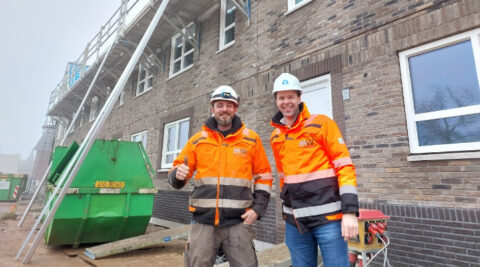[vc_row][vc_column][column_text]
BIM makes it possible to manage and exchange information. When realizing technically complex or large projects, this is a great advantage. The information is also unambiguous and can be used to simulate situations so that clashes can be quickly detected and resolved. This shortens design and construction times, reduces design and construction errors and reduces failure costs.
1 Start with a trial version
There are several BIM software packages on the market. Many of them can be tried out through a free trial. This allows you to compare and practice before purchasing a package. The license for BIM software is usually not cheap and is paid per month.
2 Create a timeline
Those just starting out with BIM will need some time to learn how to work with it and coordinate with colleagues and supply chain partners. It is important to factor that time into projects and take it into account in the overall planning of the work. Over time, working according to the BIM system will become smoother and easier. It is advisable to start BIM in a quiet period of the year, as far as possible.
3 Find a pilot project
Keep eyes and ears open: is there a project starting somewhere that is suitable as a pilot project for BIM? Approach the various colleagues and partners involved, establish criteria and make agreements.
4 Go step by step
BIM is a comprehensive system. It gives peace of mind and overview to implement the various features step by step. Because from 2D drawings to 3D designs is quite a transition. Step by step means a gradual process.
5 Start with floor plans
Starting with floor plans is a stepping stone to 3D. It does require 3D information, such as from the levels in a model. Levels are important for placing walls and columns. Floor elements end up flat on a level just like in a 2D design (in CAD). If you choose to do this, don't forget to retrieve the CAD files from BIM and send them to collaboration partners.
6 Extract data
In the "old world," it was necessary to manually enter data into tables. All kinds of information, including dimensions, location, materials and so on, can be extracted directly from the model in BIM and then put into schedules. That extraction saves an enormous amount of time.
7 Follow a training course
You can learn to work with BIM on your own, but a training course will get you started quickly(er) and teach you how to use the tools of the software program properly. Modeling exercises are always part of a training course. There are courses for beginners and for advanced users, focusing on different functions, software and applications.
Join us on May 23 at the BIM Praktijkdag, the practical conference on BIM implementation in Jaarbeurs Utrecht
More on Building automation, home automation and IT[/column_text][/vc_column][/vc_row][vc_row][vc_column width="1/4″][/vc_column][vc_column width="1/2″][button button="|title:Web site|target:%20_blank|"][button="|title:LinkedIn|target:%20_blank|"][/vc_column][vc_column width="1/4″][/vc_column][/vc_row][vc_column][vc_column][google_ad][/vc_column][/vc_row]











